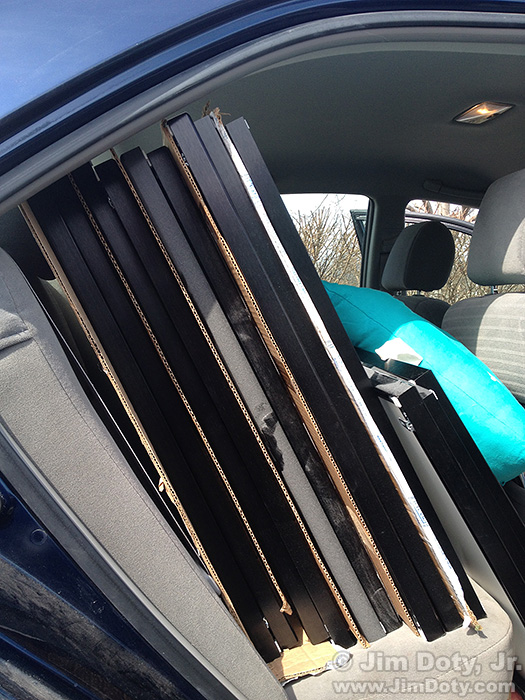I took down my photography exhibit at “Changes” so the back seat, “passenger seat”, and trunk of my car are filled with prints. It’s a good time to talk about how to move and store framed prints.
When transporting framed prints it is best to move them upright, rather than laying down. I put the biggest prints in the back seat. Small prints in the front passenger seat and the rest in the trunk. I used pillows to keep the prints from flopping back and forth. Unfortunately, the prints in the trunk had to be moved flat. With a smaller exhibit I don’t need to use the trunk of my car and so I can move everything upright. Framed prints should also be stored upright rather than laying down, just like they do in the storage area of a museum.
To prevent scratching the frames when moving them and storing them, keep them back-to-back and front-to-front. Put something in between the front-to-front surfaces so they don’t rub on each other and scratch the surface of the frames. They also need to sit and lean on a soft surface to protect the frames. As you can see from this photo, I am using cardboard sheets between the front-to-front surfaces. Another option is to use sheets of foam core.
Incidentally, large unframed photographic prints should be stored flat in archival store boxes. Non-archival storage boxes emit gasses that, over time, eat away at photographic prints. Smaller unframed prints can be stored in archival pages placed in archival albums. Archival boxes, pages, and albums are a lot more expensive than non-archival photo storage, but not nearly so expensive as having your precious and sometimes irreplaceable photos disappear over time. One excellent and highly respected source of archival storage boxes, pages, and albums is Light Impressions.
Links
Archival boxes from Light Impressions.
Archival storage pages from Light Impressions.
Archival albums from Light Impressions.

